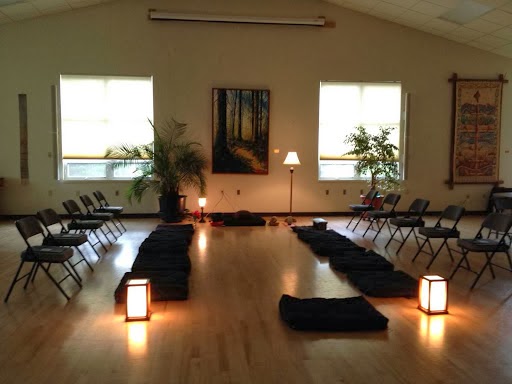Here is the breakdown of my normal mediation practice—after crawling out of bed, feeding the cat, and doing a few sun salutations, I sit on a pillow by my desk and try to be still for about ten minutes. Sometimes I practice with a guided meditation, sometimes not. I always keep my eyes closed. Around minute three, the cat starts nibbling my toes as if to say, “Isn’t it time to give me attention and play?” Around minute five, the “need” to get up and get ready for work punctuates my breath-focused thoughts…
I know this hardly seems like meditation, but I think it’s important to keep in my routine even if I don’t immediately feel “zen” during or after each sitting. Over the months, it has helped me a lot, particularly at work when I’m answering customer service calls in between entering seemingly endless numbers in a spreadsheet. I’m less rattled by the telephone ring interrupting my data entry, and it’s easier for me to remain relaxed when a customer is disgruntled. Most of the time, I’m healthily detached, which keeps me sane in an overstimulating environment.
That’s why I’m very interested in deepening my meditation practice and finding new approaches. A few nights ago, my fiancé and I attended our local Zen center for its weekly Zen meditation sangha. To be honest, I was very nervous, and I don’t think my nerves ever completely quieted the entire time we were there. Since we were new attendees, we were taken aside and given instructions on various sitting positions for zazen, when to bow, and how to label our breaths (count each breath, and start over at “1” when you have an interrupting thought).
Although our guide told us to do whatever made us comfortable because no one would judge, I still felt self-conscious when we entered the zendo (meditation hall). Meditation has always felt private to me, but one of the truths meditation reveals to us, according to our guide, is that we’re really not so different or separate from the person beside us. In fact, the customary bow to the sangha (literally “crowd” of fellow attendees) indicates that we are “not two” but one.
We began meditation with a chant, which we repeated three times. A twenty-minute sitting meditation was followed by a walking meditation during which we slowly circled the room, a symbol of bringing our practice into our active lives. We returned to our zabutons (mats and cushions) for another sitting meditation.
By this point, I was feeling rather tired, and while I tried to keep my eyes open as our guide instructed us, I closed them for long periods of time and drifted into a semi-conscious state. I definitely lost track of counting breaths! About 90% of the time when I was fully conscious, my thoughts seemed more scattered than they do when I’m not meditating! I found myself wanting to dwell in certain thoughts, but I knew I needed to release them and return to my breath.
Although the experience was challenging—on top of being in a new environment, I’m certainly not used to sitting in meditation for so long—we plan to return next week and stay for silent tea and the Dharma talk. I imagine my self-consciousness will lessen the more I attend, and if I allow the practice of Zen meditation to guide me, I bet I’ll let go of some of my self-consciousness to begin with 🙂
Do you meditate? Have your tried Zen meditation?
Related: The Zen Diet – How Meditation Helped Me Lose Weight
Mindful Living: Think Useful Thoughts
Photo: Salem Zen Center

